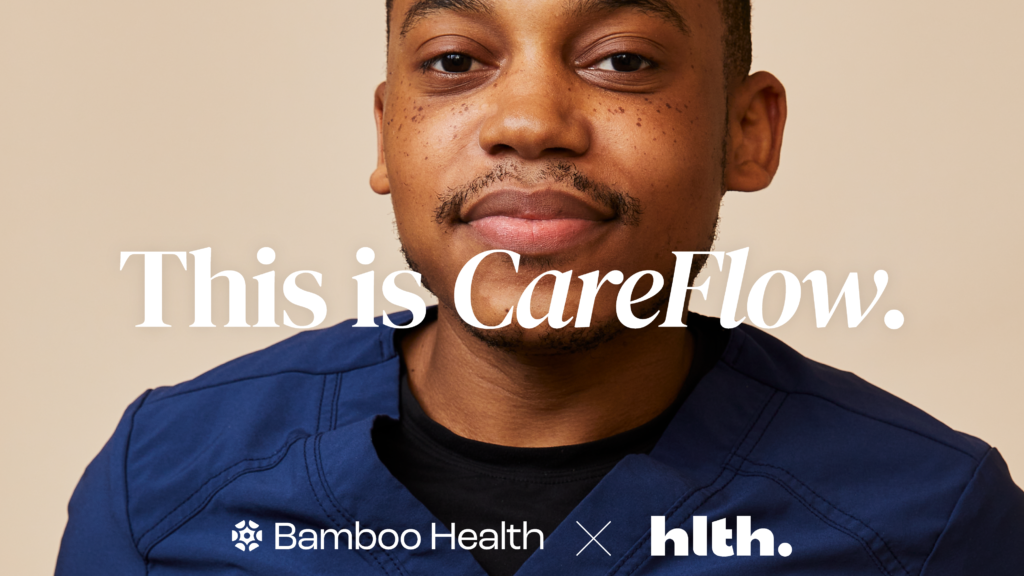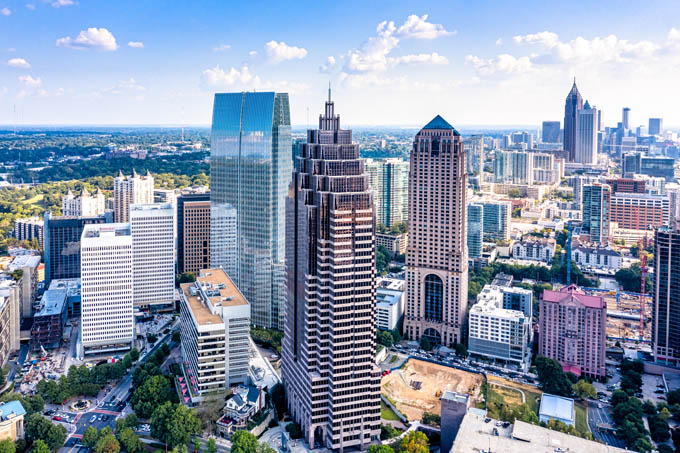In July 2022, 988 launched, providing a three-digit, easy-to-remember dial code akin to 911 for behavioral health crises and other needs. The number connected to the already existing network for the National Suicide and Crisis Lifeline, now renamed the 988 Suicide and Crisis Lifeline. The newly envisioned lifeline has made great strides in making vital behavioral health care accessible to individuals in the moments they need it most.
Not only has 988 seen an increase in contacts since the launch, but more calls, texts, and chats have been answered and responded to more quickly than in the past. Comparing December 2022 to December 2021:
- The lifeline answered 172,164 more contacts (calls, chats and texts).
- The average speed to answer across all contacts decreased from 172 seconds to 44 seconds.
- Calls answered increased by 48%, chats answered increased by 263%, and texts answered increased by 1,445%.
Bamboo Health supports 988 initiatives in several states currently through the company’s Crisis Management System, which allows staff at crisis call centers to perform digital intake and assessment and dispatch mobile crisis teams, as needed. The solution is live in three states, with implementation coming soon for several other states.
At HLTH 2022 in Las Vegas November 13-16, Bamboo Health Chief Clinical Officer Nishi Rawat, MD, MBA, moderated a fireside about 988 in regards to health equity. Dr. Rawat was joined by Brandon Johnson, MHS, MCHES, public health advisor at Substance Abuse and Mental Health Services Administration (SAMHSA), and Madhuri Jha, LCSW, MPH, director of the Kennedy-Satcher Center for Mental Health Equity at the Satcher Health Leadership Institute at Morehouse School of Medicine.
Watch the video of the fireside chat or/and read the transcript below (edited for length and clarity).
Transcript (edited for length and clarity):
Dr. Rawat: 988 is being equated as the behavioral health version of 911, a way for people in crisis or need to reach out and be connected to definitive assessment and behavioral health treatment. It provides someone to call, someone to respond, and a safe place to go, which doesn’t always happen when individuals call 911. Many regard 988 as an attempt to democratize access to behavioral health care. We are four months in since the launch in mid-July. How is it going?
Johnson: From our perspective at SAMHSA and the U.S. Department of Health and Human Services, we are really excited about where things have gone so far. Looking at our most recent data, August last year to August this year, we’ve seen about a 63% call increase, close to a 200% increase in chats, and over a 1,000% increase in text utilization particularly among young people. This is still in its infancy, but the uptick so far has been encouraging, and we’re excited about where things are going. We are continuing to listen to the community and create opportunities for us to engage. In terms of equity, we are still working with our crisis centers, their staff, to make sure that everyone is staffed up and trained adequately in issues and challenges that face communities as they are engaging with 988.
Jha: One of the things we are looking at from an equity perspective at Morehouse School of Medicine is how many people who need to access to a crisis line get access to a crisis line. We’ve been supporting SAMHSA as well as advisors to see how there’s certain population who have historically just been unmet by crisis response and overall healthcare services. It’s no surprise that those include BIPOC communities, the queer community, older adults, non-English speaking folks, refugees, immigrants, people who are physically disabled, people who are neurodiverse. We’re trying to provide states with recommendations on how they can tailor their 988 public health communications, for example, to make sure that those communities are not met with an unwarranted response.
Dr. Rawat: Brandon, at SAMHSA, you have been supporting states with respect to 988 funding and implementation for a couple of years. What are you doing with states specifically around health equity?
Johnson: There is so much happening at SAMHSA in the equity space. Equity is a cross-cutting issue at our agency within the work we are doing. We are embedding equity through everything we’re doing, including 988. At a crisis center, you are in the communit, and understand it better than we do. One key aspect of it is, are you checking your data to see who you are serving? Do they know what services you provide or how to get access to 988? We’re doing a lot of work on our end with this as well. The press 3 option for LGBTQ+ youth and young adults, working with The Trevor Project, is live. If you dial in and press 3 as a young person who is LGBTQ+ you’ll get access, and we’ve seen more than we had expected in terms of uptake. Another thing I wanted to highlight is that SAMHSA, in partnership with the Suicide Prevention Resource Center, National Action Alliance for Suicide Prevention and the Ad Council, we’re doing a formative research project on a quantitative and qualitative side to engage communities. With this project, we’re engaging key informants and putting out survey to populations such as African American youth and young adults, Hispanic youth and young adults, LGBTQ+ young people and adults, American Indian natives, and older rural adults. One piece that I’m encouraged by is that we are engaging with individuals with lived experience. If you’ve experienced suicidal crisis, if you’ve made a suicide attempt, we’re engaging to understand how 988 can meet your needs. How can it be better? Are there barriers? How do you feel about crisis intervention as a whole? Are there historical traumas that prevent you from reaching out to a crisis line? If it’s not what the communities are feeling or thinking, then we’re not about the business of equity.
Dr. Rawat: The first step towards improvement is obviously evaluation. Madhuri, your organization recently put out a policy report in conjunction with Beacon Health Options around state performance, baseline performance, for 988 with respect to health equity. What can you highlight for us from that report?
Jha: I think there are some things to put into perspective when it comes to communities that have not been reached by our crisis response system. Even if someone has language proficiency that’s stable in English, when you’re in crisis, you’re going to want to go to your native language. The barriers that we must think through are important so that we don’t continue to perpetuate them. 75% of US counties are what’s called a mental health clinician shortage site. That means that not only are there no MDs or nurse practitioners to prescribe medications, but it’s also very hard to even find a clinician who can sit with you and talk to you. We’ve made recommendations to include peer recovery specialists on mobile crisis teams. It’s an evidence-based intervention where someone who has lived experience who’s been able to access the system is able to represent you through that process. We’ve recommended the use of medical translators as well. SAMHSA is working hard to get 988 accessible in Spanish, but we know that there are so many other languages that are also spoken in the U.S. I think the last thing to think about too is telehealth service delivery. What we can do if somebody does need access to an outpatient service and can’t find the service in their state. Can they see a telehealth provider temporarily across state lines so that they can have their needs met? For instance, certain tribal reservations are not accessible by car, and currently, suicide is the second leading cause of death amongst indigenous youth, African American youth, Hispanic youth, Asian youth, youth overall. We have a crisis right now in the US that 988 provides true potential. It’s a historic moment in our time to really think through, how do we get kids, families, adults access to care for the first time ever?
Dr. Rawat: Let’s talk about the mental health professional shortages areas. As you said, 75% of the counties in the US are shortage areas and shortage area is usually strongly correlated to rurality as well as low income. The naysayers out there say 988 is creating another silo of care, the acute, the crisis end. If you’ve got most of the U.S. being in a mental health professional shortage area, someone calls in, then what? Where’s that longitudinal care? What is SAMHSA doing, and Madhuri, what are your recommendations in terms of providing that longitudinal care?
Johnson: You put it perfectly in the beginning – someone to reach out to, someone to respond, and somewhere to go. We’re putting a lot of investment into Certified Community Behavioral Health Centers (CCBHCs). There has been a monumental increase in funding through the Biden and Harris administration. They are in 46, I believe, of the 50 states, and they provide care specifically if people don’t have the ability to pay, similar to the FQHC, the Federally Qualified Health Center. In looking at the data, over 90% of our CCBHCs have some type of crisis stabilization unit. A lot of them have mobile crisis units. We just released a grant recently that funded 10 states to do crisis intervention work particularly to build supports that move away from law enforcement because we know that’s a critical deterrent and barrier for a lot of our communities that we’ve talked to about access to care. CCBHCs are doing care that is culturally sensitive, using cultural humility and cultural competence.
Jha: There’s a tremendous opportunity to understand metrics in a different way when you look at 988. Currently, 988 is anonymous. You are not geolocated. You have the option that you’re not going to be identified of where you are. We’ve been working with SAMHSA understanding; how do we figure out who’s calling? Because truthfully, it’s hard to get communities adverse to calling 911 to jump on and call 988 now. Regarding the workforce piece of it, university training centers are a big recommendation for partnership. Giving students incentives to not only be embedded into crisis centers for their training opportunities, but perhaps create an incentive for them to have guaranteed employment, for example, when they graduate with their social work degree. In addition, there are certain trainings that we think are mandatory for all facets of the continuum of care across 988. From the person who gets to triage the call to the assistant who’s managing the paperwork for that crisis center, all should be trained in Mental Health First Aid, not just because it’s an important skill, but when you have the perspective to know what I can do to deescalate someone when they’re in crisis, you buy in to the success of that intervention. I think that’s why 988 is a huge opportunity to break down other kinds of workforce silos. We can see this as more of a true interdisciplinary effort to meet people’s needs in the communities, which really takes what we do well in hospitals and embed them into mobile crisis care, phone crisis care, telecounseling, things like that. The last thing from a workforce perspective is we must build on what exists in communities that’s going very well. There are healing circles that have existed in certain communities of colors for a very long time that should be leveraged as amazing bridges to folks to be able to seek someone that they trust, and then connect them with a mental health professional that can give them the appropriate care to meet their needs. We want to build on those strings. We talk a lot about resiliency. Resiliency is a function of trauma. We have to acknowledge both and find ways to measure not only the adverse outcomes that people have but as well, what are they doing really well to be able to survive and exist? The last thing I’ll say is it’s important that our metrics don’t do more harm than they do good. It’s very dangerous to say that race or ethnicity, for example, is a risk factor for crisis. These environments where we see uptick of suicide, uptick of crisis calls, we want to identify what’s actually happening at the community level that we can tackle from a policy perspective or a local intervention as opposed to doing what we’ve done historically which is bracket certain groups to be at risk. Instead, we should acknowledge the strengths that they have within their own communities that we could all stand to learn more about.
Dr. Rawat: Let’s shift gears to technology. Two years ago, when Bamboo Health was starting to look at crisis care and leveraging our technologies to support 988 and beyond, we were maybe one of a couple of technology vendors threading together the crisis care continuum with technology. It is similar today. Why are there so few technology vendors involved in crisis care and behavioral health more generally? You’ve got a number of vendors here at HLTH. What are your recommendations?
Jha: We don’t have enough psychiatrists or mental health clinicians, period. For example, I supported CMS [Centers for Medicaid and Medicare Services] to do an assessment of whether or not telehealth service delivery creates equitable access to mental health services. It was almost unanimous that the access goes up if we increase technology platforms. What’s not unanimous is if people feel that the quality of care that someone will receive when they’re in crisis will be what they need to be. There is some truth that that. There is a mobile crisis team component to 988 which is crucial because there are times where someone needs to be seen in person to deescalate so that they’re not unnecessarily hospitalized or, even worse, incarcerated or have some other kind of adverse outcome because they’re not met with the need. I think that’s one of the challenges that platforms are having is how do we make sure from a liability perspective that we’re able to be responsible and manage the risk of someone being in crisis, but we have a protocol in place where someone locally can have their needs met.
Johnson: For SAMHSA, we’re engaging with states when they’re developing their metrics and creating dashboards. I think technology is a key piece there and something that we heard loud and clear – why we needed to improve our tech services. We want to continue to hear from folks and see how we can incorporate this and encourage our states to look at those opportunities to build in technology for the work that they’re doing.



